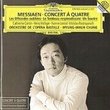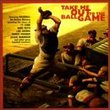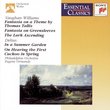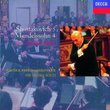| All Artists: Ludwig van Beethoven, Artur Schnabel Title: Beethoven: Piano Sonatas Nos. 21 'Waldstein', 22, 23 'Appassionata', 24, 25, 27 & 30-32 Members Wishing: 1 Total Copies: 0 Label: EMI Classics Release Date: 9/7/2004 Album Type: Original recording remastered Genre: Classical Styles: Chamber Music, Forms & Genres, Sonatas, Historical Periods, Classical (c.1770-1830), Modern, 20th, & 21st Century, Romantic (c.1820-1910) Number of Discs: 2 SwapaCD Credits: 2 UPC: 724356288126 |
Search - Ludwig van Beethoven, Artur Schnabel :: Beethoven: Piano Sonatas Nos. 21 'Waldstein', 22, 23 'Appassionata', 24, 25, 27 & 30-32
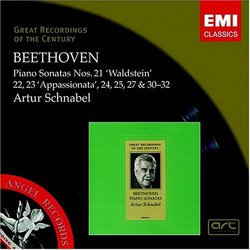 | Ludwig van Beethoven, Artur Schnabel Beethoven: Piano Sonatas Nos. 21 'Waldstein', 22, 23 'Appassionata', 24, 25, 27 & 30-32 Genre: Classical
|
Larger Image |
CD DetailsSimilarly Requested CDs
|
CD ReviewsGreat compilation, vividly played Leonardo | Argentina | 01/02/2006 (5 out of 5 stars) "a great, great compilation. why?? 1) sound. yes, it was recorded in 1930s, so not everything is so clear but unless you are too demanding in sound quality the sound is very acceptable (for my taste at least) and, most important, luckily EMI almost completely deleted any trace of "hiss" (which I find unbearable even with better and clearer piano sound). 2) pianist: Schnabel, as far as I read, is a legend, at least in LvB piano sonatas. They are vividly played, with appropiate "elastic" tempi (a similar effect in past conductors, look at my review of Brahms symphonies by Jochum, with a similar "flexible" approach). Also there is a lot of virtuosism. The only problem I find is in Appasionata, specifically in its last mov: too, too, too fast, with no time to "savour" the notes and with very important "forte" notes (they are climaxes indeed) strangely played "piano" so their effect is completely lost. Yes, it sounds like a twister, a storm but misconceived. the rest of the CDs is played with a near perfect approach. Maybe there are techical problems (I am not a pianist, that is what i read) but the conception is always OK (except for 3rd mov op 57, as i said). 3) works. To begin with Beethoven some "early" famous works are always wellcome eg Pathetique and Moonlight. They are absent here, because the aim here is to present the middle and late periods from the piano sonata point of view. -In the late period, you can in 1 CD include hammerklavier and some other, or the last tryptic, the solution found here (together with sonata 27). To play together the last 3 sonatas makes one see them as a group and to find out relations eg sonata 30 and 32 (the corners of the 3) end with variations. I like them very much, specially the sonata 32. -In the middle period you have the works in the 1st CD. Favourites are Waldstein and op 57, yes (perhaps the 2 most important sonatas of LvB, at least from the most popular). So are the sonatas 22, 24 & 25 simply fillers ???? Definitely NOT!!! They are quite complemetary to the 2 famous already cited: nº 22 has a minuet, but a middle period minuet, which is far advanced than the "early style" minuets. And has a toccata mov which sometimes makes me remember Schumann. Nº 78 has one of the most lovely movs ever created by the composer, and should be better known. The last mov is quite complementary. And Nº 25? A surprising and charming work. Sounds too Mozartian (the brief K 545 was a model?), but never he goes back in style to his earlier period. It has 3 movs (wonderfull all 3 !!!) and all played, with complete repeats, in less than 9 minutes !!! Clearly an essay on how to compose a full (for the quality and diversity of the ideas) "brief" sonata. please, try this compilation. you won`t regret." Dull sound in these reissues A techno geek | Kihei, Maui, HI USA | 11/07/2005 (2 out of 5 stars) "I had high hopes for this reissue of the magical recordings by Schnabel of the Beethoven sonatas. The engineers did an admirable job of reducing the surface noise from the 78 rpm disks. But they took out the sparkle from the keys that can be heard on the "Schnabel Plays Beethoven" Pearl editions of these recordings, or the "Beethoven: Piano Works" Naxos editions."
|

 Track Listings (13) - Disc #1
Track Listings (13) - Disc #1
